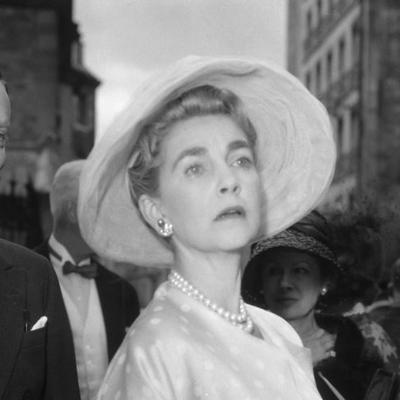Barbara Hutton at a Glance
- Categories: Celebrities, Celebrities > Models
- Net Worth: $3.5 Thousand
- Birthdate: Nov 14, 1912 - May 11, 1979 (66 years old)
- Birthplace: New York City
- Gender: Female
- Nationality: United States of America
- Height: 5 ft 6 in (1.68 m)
The Tragic Downfall of Barbara Hutton: From Billionaire Heiress to Penniless Socialite
Introduction: The Poor Little Rich Girl
Barbara Hutton’s name is synonymous with both unimaginable wealth and devastating personal tragedy. Born into American high society, she inherited a fortune that should have secured her a life of luxury and ease. Yet, by the time of her death in 1979, the heiress to the Woolworth fortune was left with a mere $3,500. This article delves into the complex life of Barbara Hutton, exploring the vast wealth she possessed, the extravagant lifestyle that consumed it, and the emotional turmoil that ultimately led to her downfall.
Early Life and The Woolworth Fortune
Barbara Hutton was born in New York City in 1912. Her life began with significant advantages. Her maternal grandfather was Frank W. Woolworth, the founder of the successful Woolworth’s retail chain. Her father, Franklyn Laws Hutton, was a co-founder of the investment bank E. F. Hutton. Her aunt was Marjorie Merriweather Post, a well-known socialite and heiress to the General Foods fortune (Marjorie Merriweather Post). This lineage positioned her to inherit a massive fortune. Upon turning 21, Barbara inherited a staggering $50 million – a sum equivalent to hundreds of millions today, adjusting for inflation. This inheritance, combined with her family’s influence, made her one of the wealthiest women in the world.
A Life of Excess: Homes, Jewels, and Marriages
Barbara Hutton embraced a lifestyle of unparalleled luxury. She traveled extensively, acquiring lavish homes across the globe, including a palace in Morocco and a villa in Spain. Her collection of jewels was legendary, boasting pieces that once belonged to Marie Antoinette. Her spending habits were extravagant, reflecting a desire to live life to the fullest. However, her wealth proved to be a curse. Unable to manage her fortune effectively, she was surrounded by individuals who sought to take advantage of her generosity. This combination of bad financial decisions and unscrupulous advisors slowly eroded her wealth.
The Seven Marriages of Barbara Hutton
Perhaps the most talked-about aspect of Barbara Hutton’s life was her tumultuous romantic history. She was married seven times, each union seemingly more dramatic than the last. Her husbands included:
- Prince Alexis Mdivani
- Count Kurt Haugwitz-Hardenberg-Reventlow
- Cary Grant
- Prince Igor Troubetzkoy
- Porfirio Rubirosa
- Baron Gottfried von Cramm
- Raymond Doan, who she never divorced, but lived apart.
Many of these marriages were short-lived, often marked by scandal and emotional distress. Her relationship with Cary Grant, though highly publicized, also ended in divorce. Her only child was Lance Reventlow, born from her marriage to Count Kurt Haugwitz-Hardenberg-Reventlow. The complexities of her personal life frequently overshadowed her public image, contributing to her “Poor Little Rich Girl” persona.
Financial Ruin and the Final Years
By her later years, Barbara Hutton’s financial situation was dire. Her once-vast fortune had dwindled due to mismanagement, lavish spending, and unfortunate investments. She struggled with alcohol and substance abuse, which further complicated her life. She was forced to sell off her prized possessions, including valuable art and jewelry, to maintain her lifestyle. Tragically, the woman who had inherited millions was on the brink of bankruptcy when she died on May 11, 1979, at the age of 66.
Barbara Hutton’s Enduring Legacy
Barbara Hutton’s story serves as a cautionary tale about the perils of wealth and the importance of personal relationships and sound financial judgment. Despite her tragic end, she remains a fascinating figure, representing an era of extravagant luxury and the human cost of living in the public eye. Her life continues to capture the public’s imagination, inspiring books, films, and countless articles.
Conclusion
Barbara Hutton’s life, though marked by immense wealth, ultimately underscores the fact that money cannot buy happiness. Her story is a poignant reminder that even the most privileged individuals can suffer from emotional turmoil, addiction, and financial ruin. The “Poor Little Rich Girl” remains an enduring symbol of a life lived at the extremes, a cautionary tale of a fortune lost and a legacy forever intertwined with both glamour and tragedy.

